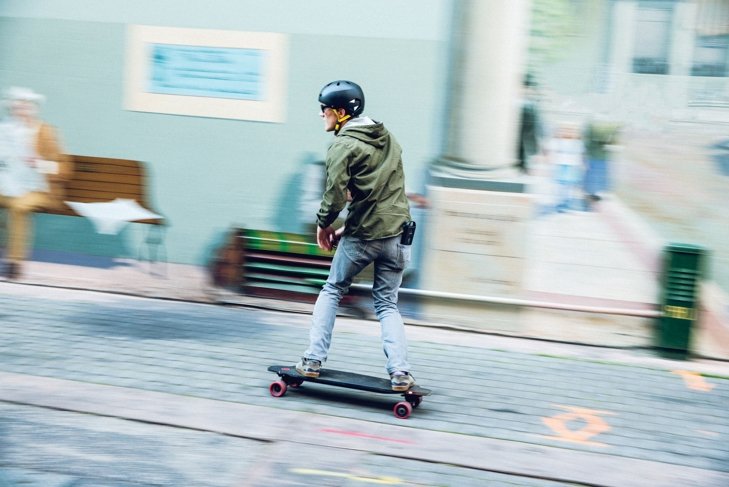
Ryan Evans and Theo Cerboneschi are two lucky guys. They’ve figured out how to make a living by combining their passion for extreme sports with their respective affinities for business and technology. The result is an innovative electric skateboard that’s, uh, gaining traction. It might change the way many of us city dwellers commute. And it’s only the beginning of the breakthroughs the pair has planned.
Board beginnings
The two men met through kiteboarding. After Evans graduated from college, he became a professional kiteboarder and went to work at kiteboard retailer and lesson center REAL Watersports in Cape Hatteras, NC. Evans was sponsored by manufacturer Best Kiteboarding and later went to work for that company. Cerboneschi was a professional kiteboarder from ages 16 to 18 and met Evans through being sponsored by Best Kiteboarding*. They became friends and kept in touch.
When Cerboneschi went to the University of Colorado to study mechanical engineering, he designed and built his own electric skateboard to get around campus. So many people stopped him to ask where they could get a skateboard like that, he decided to leave school to further develop his design “and see where that would go.” He contacted Evans, and together they founded Inboard Technology in Santa Cruz, CA, in 2014.

The design edge
Other electric skateboards tend to be heavy and bulky because they use a mechanical drive train and a large battery, says Evans, 34 and CEO of Inboard Technology. Cerboneschi’s design is all electronic and integrated into the skateboard, with tiny motors built into the wheels. Other boards have adopted similar in-wheel motors, but Inboard was the first.
“When I started designing this, engineers told me I wouldn’t ever be able to do it,” says Cerboneschi, 26 and CTO of the company. “I was naïve and so I did it anyway.” He also designed the board to have swappable battery packs, which saves on weight and gives the board a longer range.
The company’s first board, the M1, was designed to showcase the technology, says Evans. The M1 targets a broader demographic than the typical skateboarder. Users are 25 to 50, live in urban areas and use the board for commuting and running errands. Unlike shortboards that are designed for tricks, the M1 is a longboard and much more stable. It can travel at speeds up to 22 mph, but new riders can start slow, using the board’s handheld remote controller to go no more than 5 mph at first. The board has LED headlights and tail lights, and its innovative braking system is more reliable than other boards, says Evans.
The board is paired with a smartphone app that runs on iOS, through which the board’s firmware can be updated. Late last year, for example, a firmware update increased the board’s torque by 40 percent, says Cerboneschi.
With all that innovation packed into it, the M1 isn’t cheap; however, Inboard Technology did recently drop the M1’s price from $1,399 to $999.
Why a skateboard?
Inboard Technology is betting on the rising popularity of micro-mobility vehicles in urban areas.With the increasing use of autonomous vehicles, as well as bike share and scooter share programs, the entire transportation industry is changing, says Evans. Inboard’s skateboard fills a need for easy, lightweight, environmentally friendly and portable intermodal transportation. People can skateboard a mile or two to the nearest bus or subway, pick up and take the board with them, then use the board after disembarking to reach their final destination.
Beyond the board
It may have carved out an enviable niche, but Inboard is already developing other transportation products.
“We always knew that we wanted to take this core technology—swappable battery, integrated electronics, the hub motor technology—and put it into other form factors like an electric car, an electric scooter or an electric motorcycle,” Evans says. “We want to make products that allow anybody to have freedom of mobility in urban areas, whether you’re seven years old or 70.”
The company is in talks to license its technology to toy makers for possible use in children’s ride-on toys, says Evans (remember Power Wheels?). It may also develop a wheelchair that could be less expensive and better able to navigate rough terrain than current models.
In fact, says Evans, “We’re going to look back in three or four years and laugh at the idea that this ever looked like a skateboard.”
